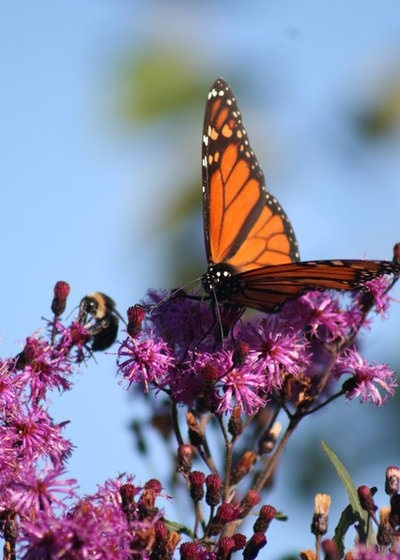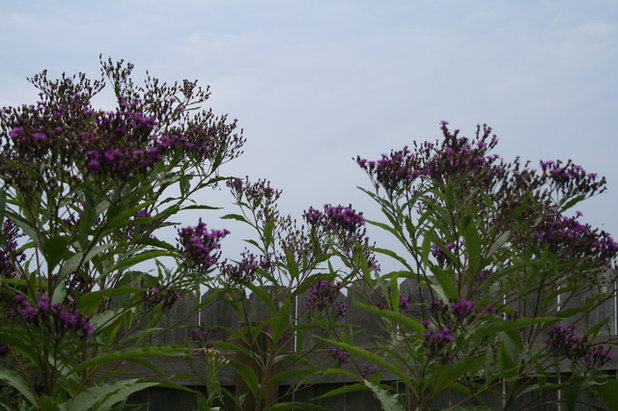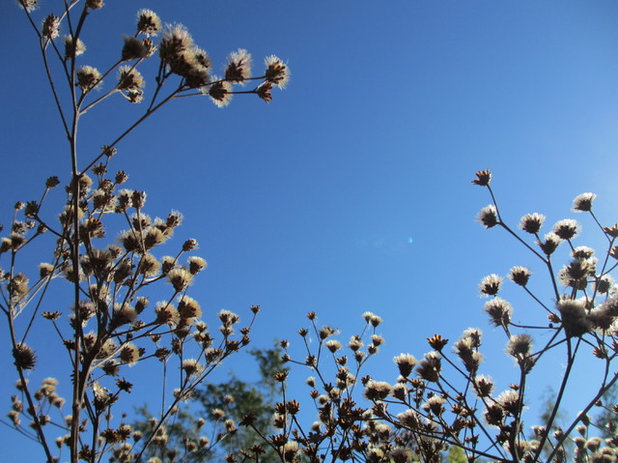I'm always on the lookout for native plants that I don't see in gardens but that I do see out in the wilderness. Ironweed is a unique plant that's as tough as nails, provides three-season interest and attracts beneficial insects in a wildlife-inspired garden.

Benjamin Vogt / Monarch Gardens
Botanical name: Vernonia fasciculataCommon name: Ironweed
Origin: Native in areas from the eastern Great Plains through the Midwest
Where it will grow: Hardy to -30 degrees Fahrenheit (USDA zones 4 to 9; find your zone)
Water requirement: Medium to wet clay and loam soils
Light requirement: Full sun, some shade okay
Mature size: 3 to 4 feet tall and 2 to 3 feet wide
Benefits and tolerances: Easy-care perennial; tall, slender profile; attracts native bees and butterflies; ornamental seed heads
Seasonal interest: Good two- to four-week bloom period in late summer, when almost everything else is tired, followed by strong stems that add lasting winter interest
When to plant: Spring to fall

Benjamin Vogt / Monarch Gardens
Distinguishing traits. There are so many ironweed species in the U.S. that it's easy to find one for your locale — some are a bit taller than others, some have slightly different blooms or fuzzier leaves, but all love moist to medium clay and average garden soil. In full sun they stand stout and strong, lifting their butterfly-attracting blooms to a safe space beneficial insects seem to love. So whether it's the more widespread
fasciculata, the eastern
noveborancensis, the central
missurica or the eastern
gigantea (5 to 8 feet tall), there's an ironweed for you.

Benjamin Vogt / Monarch Gardens
How to use it. Taller plants tend to be placed in the back of the border, but ironweed has such a slender frame, I think it'd do well in the middle or in a finger sticking out from a border. It's perfect for rain gardens but, like most adaptable natives, can take some short-term drought (it might grow a bit shorter if too dry). The iron-colored seed heads are ornamental in mid-fall.
Planting notes. You can plant ironweed almost any time of year. Fall is the best time to plant anything, though, because the cooler temperatures are easier on you and the plants, and the warm soil lingers into late fall, allowing the roots to stretch out and create a fuller, stronger, ready-to-go plant in spring.





